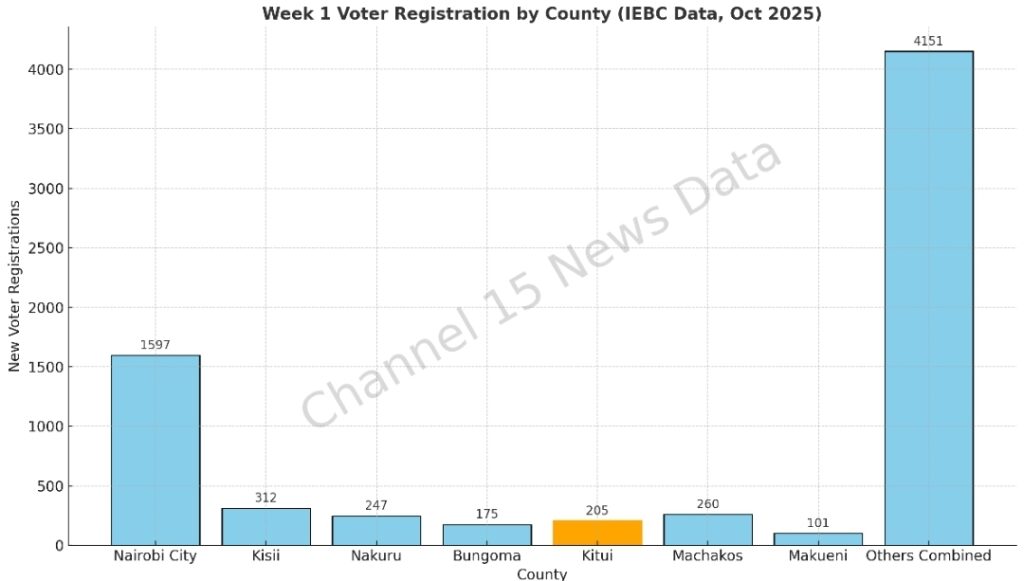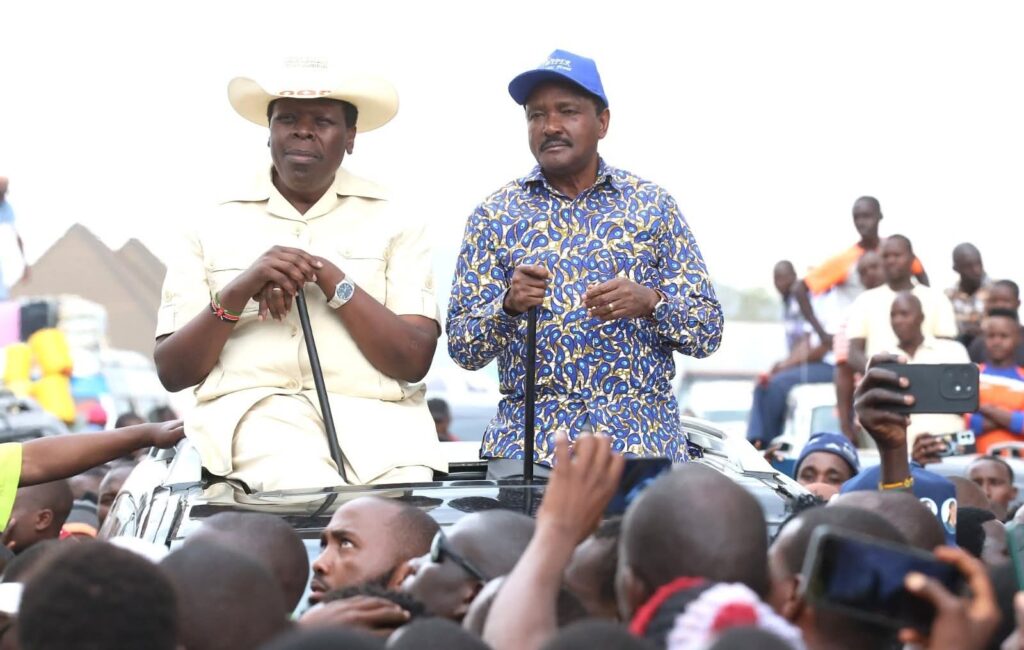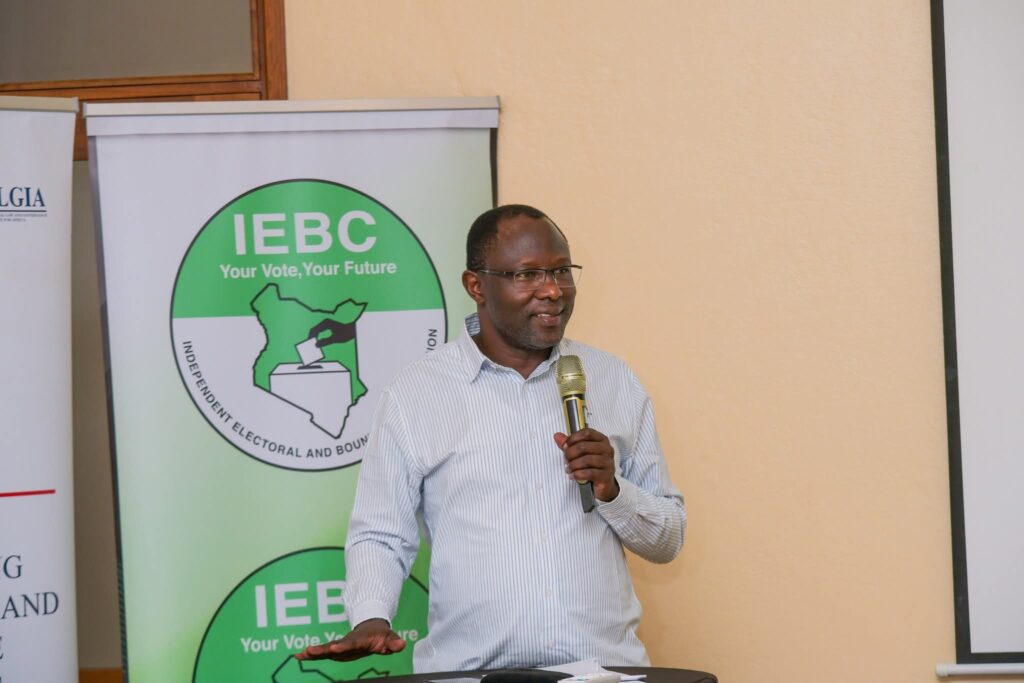The Independent Electoral and Boundaries Commission (IEBC) has released its first progress update on the ongoing Continuous Voter Registration (CVR), revealing modest growth across the country but raising fresh concerns over the turnout in the Lower Eastern counties of Kitui, Machakos and Makueni.
Since the relaunch of the exercise on 29th September 2025, IEBC reports show that a total of 7,048 new voters had been captured across the country within the first four days, alongside 259 transfers and eight updates to personal details. Nairobi City led the pack by a wide margin, registering 1,597 new voters and 42 transfers, followed by Kisii with 312 new voters, Nakuru with 247, and Bungoma with 175.

In sharp contrast, the Lower Eastern region posted far leaner numbers. Kitui County registered 205 new voters and recorded a single transfer. Machakos fared slightly better with 260 new voters, while Makueni added only 101 with two transfers. Combined, the three counties contributed just 566 new voters and three transfers — fewer than Nairobi alone managed in the same period.
The figures have sparked debate over the readiness of the Ukambani strongholds to demonstrate their weight in the national political equation. With Wiper leader Kalonzo Musyoka seen as the foreseeable united opposition candidate for 2027, analysts argue that the turnout in Kitui, Machakos and Makueni will be closely scrutinized as an early barometer of his grassroots appeal. While loyalty to Kalonzo in the region is not in doubt, the real test lies in whether that loyalty will be converted into hard numbers at the register.
Several factors may explain the slow start. Civic awareness remains low, especially among the youth, and accessibility challenges persist in remote areas of Kitui and Makueni. Political complacency in strongholds where Wiper dominance is taken for granted has also dampened urgency. IEBC officials, however, believe turnout could improve as momentum builds in the coming weeks, especially with by-elections scheduled for late November that may heighten political activity.
For its part, IEBC has emphasized that the process is inclusive, transparent and secure. Chairperson Erastus Edung Ethekon highlighted the introduction of iris recognition as a new biometric safeguard to complement fingerprints and facial photos, a move designed to enhance voter identification. He assured Kenyans that all data collected will be protected under the Data Protection Act, 2019.

Still, the numbers remain sobering for Lower Eastern. While Nairobi and Kisii surge ahead, Kitui, Machakos and Makueni risk being overshadowed if voter registration does not scale up. Political observers warn that in Kenya’s high-stakes electoral landscape, numbers are political currency, and without a stronger registration drive the region may struggle to assert its influence.
The challenge for Kalonzo Musyoka and other local leaders is therefore clear: not to prove loyalty, which the region already commands in abundance, but to translate that loyalty into numbers. Every national election is decided not just by alliances but by raw voter strength, and for Lower Eastern, the opening week of registration has sounded the alarm. The battleground has shifted from campaign rallies to registration centers, and the region has no time to waste.


